Subaru Telescope Discovers "Fossil" of the Early Solar System
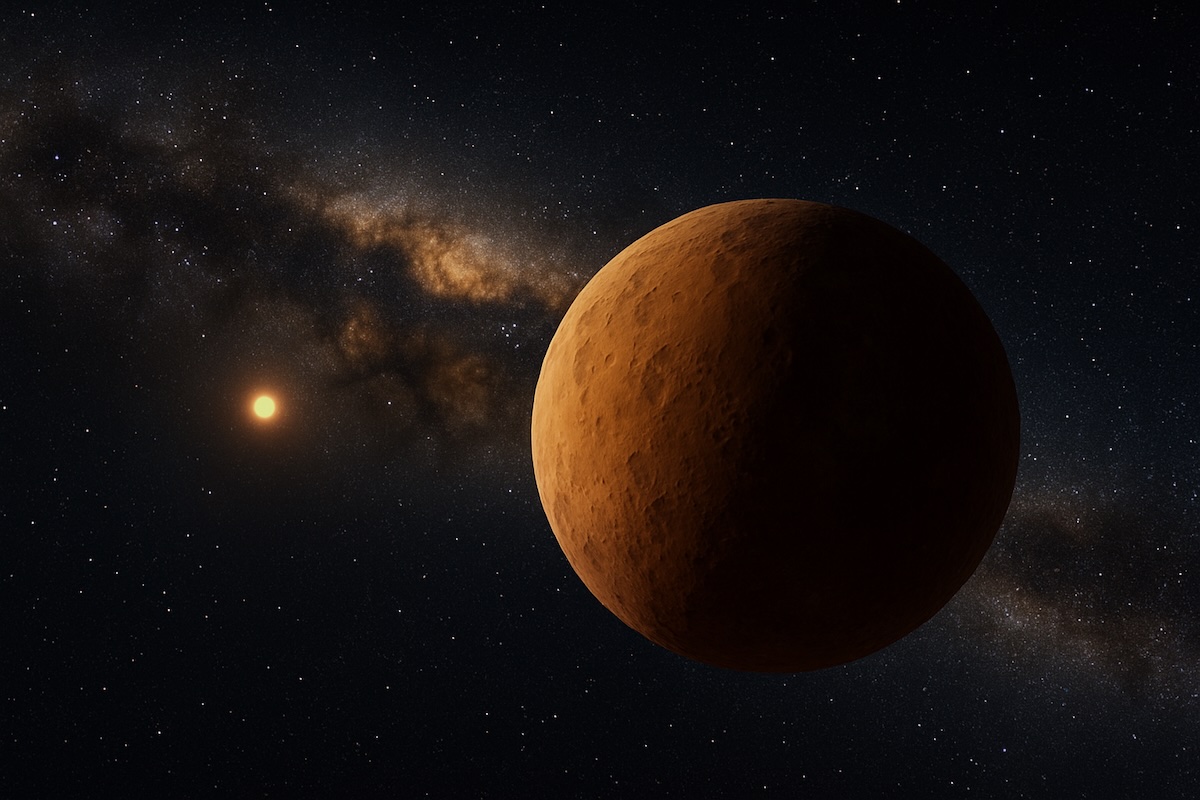 The Subaru Telescope has revealed a fourth member of the sednoids, a group of small bodies with peculiar orbits around the outer edge of the Solar System that includes Sedna. The new object, officially designated 2023 KQ14, has been nicknamed "Ammonite" by the research team. Numerical simulations using computational resources including the PC Cluster of National Astronomical Observatory of Japan (NAOJ) indicate that it has maintained a stable orbit since the early stages of the Solar System's formation. Ammonite is expected to serve as a "fossil" preserving memories of the Solar System's infancy. It may provide clues to the existence of the hypothetical Planet Nine and the origins of the Solar System. (July 15, 2025, Press Release)
The Subaru Telescope has revealed a fourth member of the sednoids, a group of small bodies with peculiar orbits around the outer edge of the Solar System that includes Sedna. The new object, officially designated 2023 KQ14, has been nicknamed "Ammonite" by the research team. Numerical simulations using computational resources including the PC Cluster of National Astronomical Observatory of Japan (NAOJ) indicate that it has maintained a stable orbit since the early stages of the Solar System's formation. Ammonite is expected to serve as a "fossil" preserving memories of the Solar System's infancy. It may provide clues to the existence of the hypothetical Planet Nine and the origins of the Solar System. (July 15, 2025, Press Release)

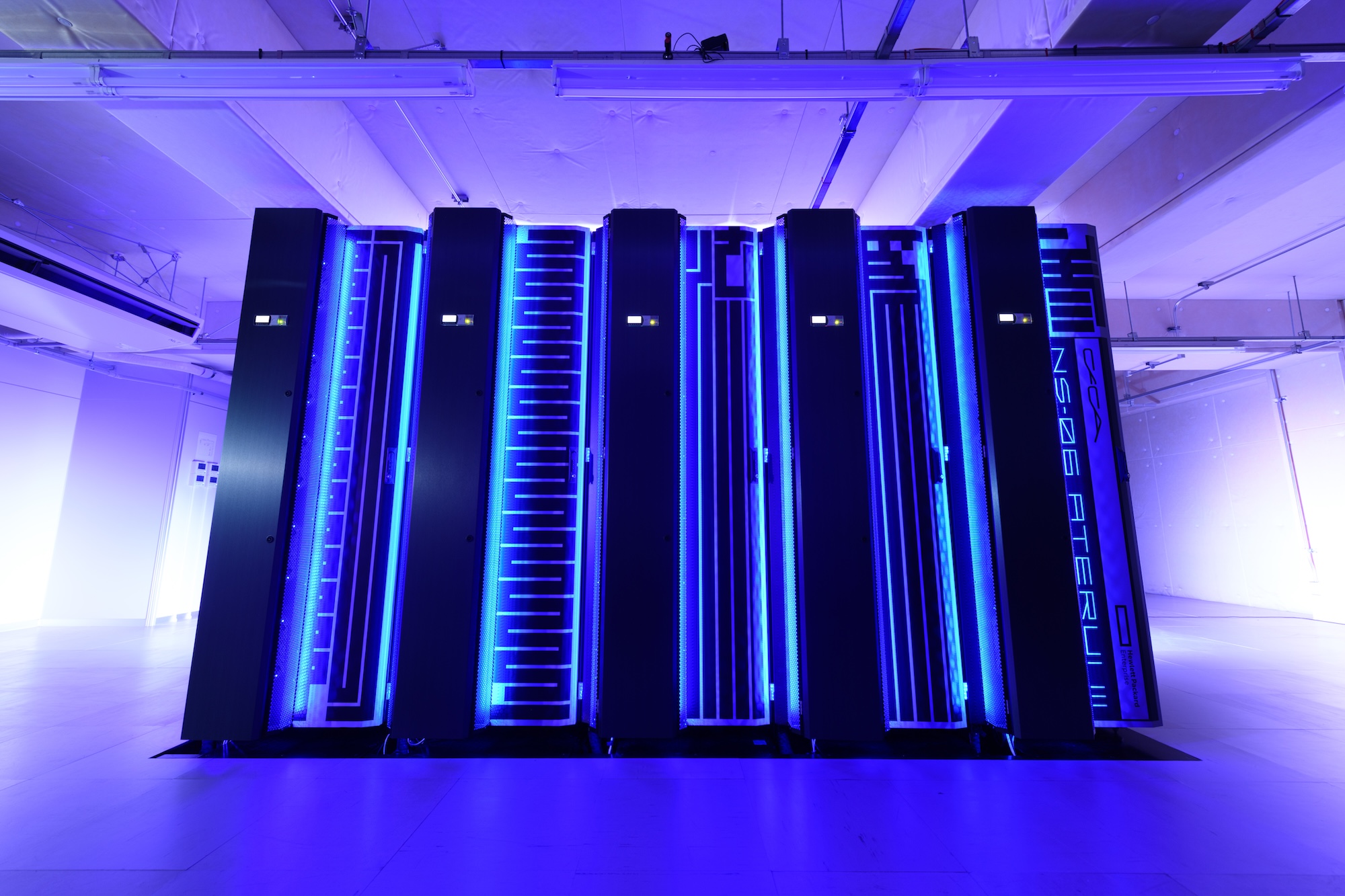 The Center for Computational Astrophysics at the National Astronomical Observatory of Japan (NAOJ) has introduced the HPE Cray XD2000 system as a new supercomputer to replace the current dedicated astronomy supercomputer "ATERUI II." The operation of the new system began on December 2, 2024, at NAOJ Mizusawa Campus in Oshu City, Iwate Prefecture. The new system has been nicknamed NS-06 "ATERUI III," inheriting the name from its predecessor. (December 2, 2024)
The Center for Computational Astrophysics at the National Astronomical Observatory of Japan (NAOJ) has introduced the HPE Cray XD2000 system as a new supercomputer to replace the current dedicated astronomy supercomputer "ATERUI II." The operation of the new system began on December 2, 2024, at NAOJ Mizusawa Campus in Oshu City, Iwate Prefecture. The new system has been nicknamed NS-06 "ATERUI III," inheriting the name from its predecessor. (December 2, 2024)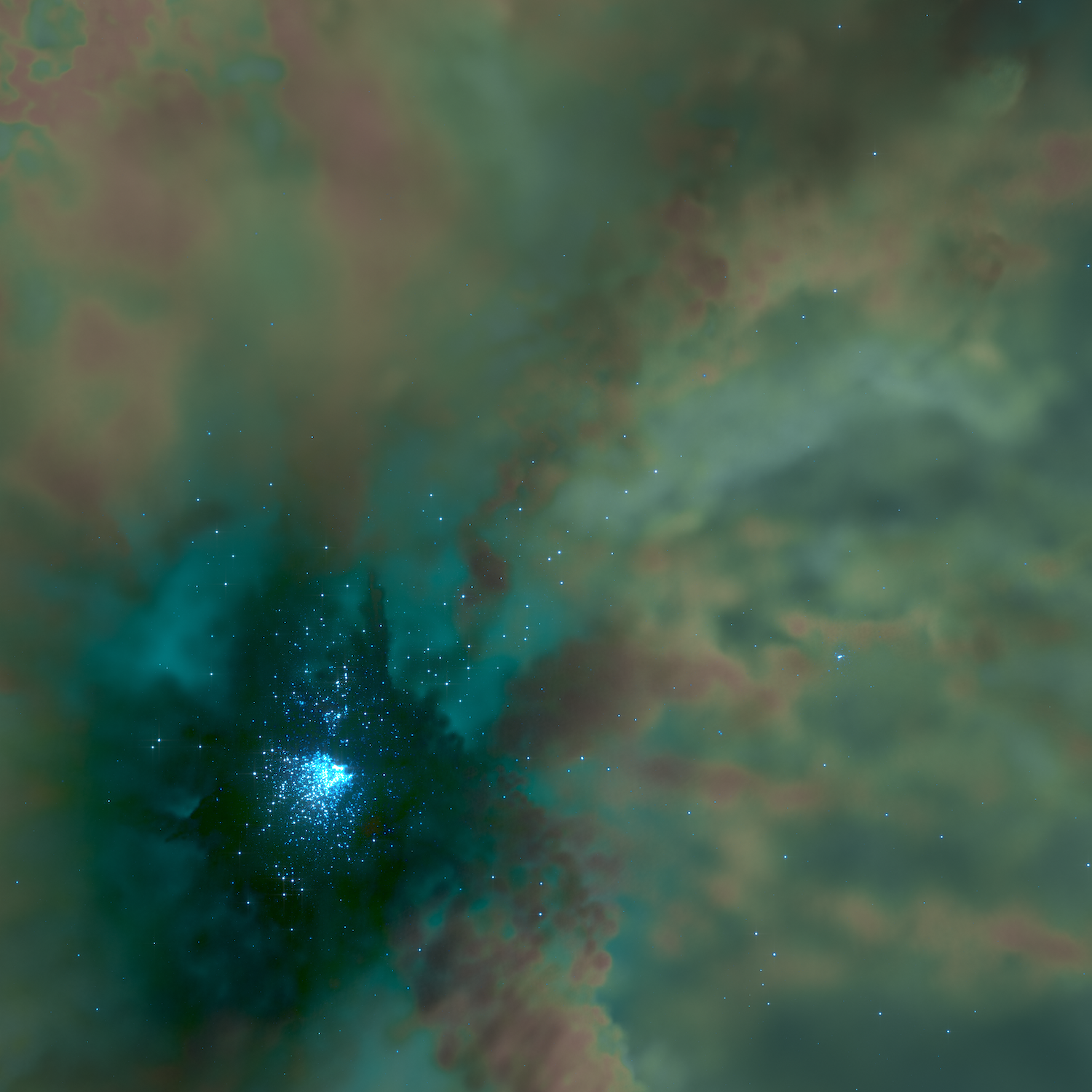 The first star-by-star simulations of globular cluster formation show that massive star collisions can start a runaway process resulting in the formation of intermediate-mass black holes. These results can help explain the origins of this rare type of black holes. (May 31, 2024 press release)
The first star-by-star simulations of globular cluster formation show that massive star collisions can start a runaway process resulting in the formation of intermediate-mass black holes. These results can help explain the origins of this rare type of black holes. (May 31, 2024 press release)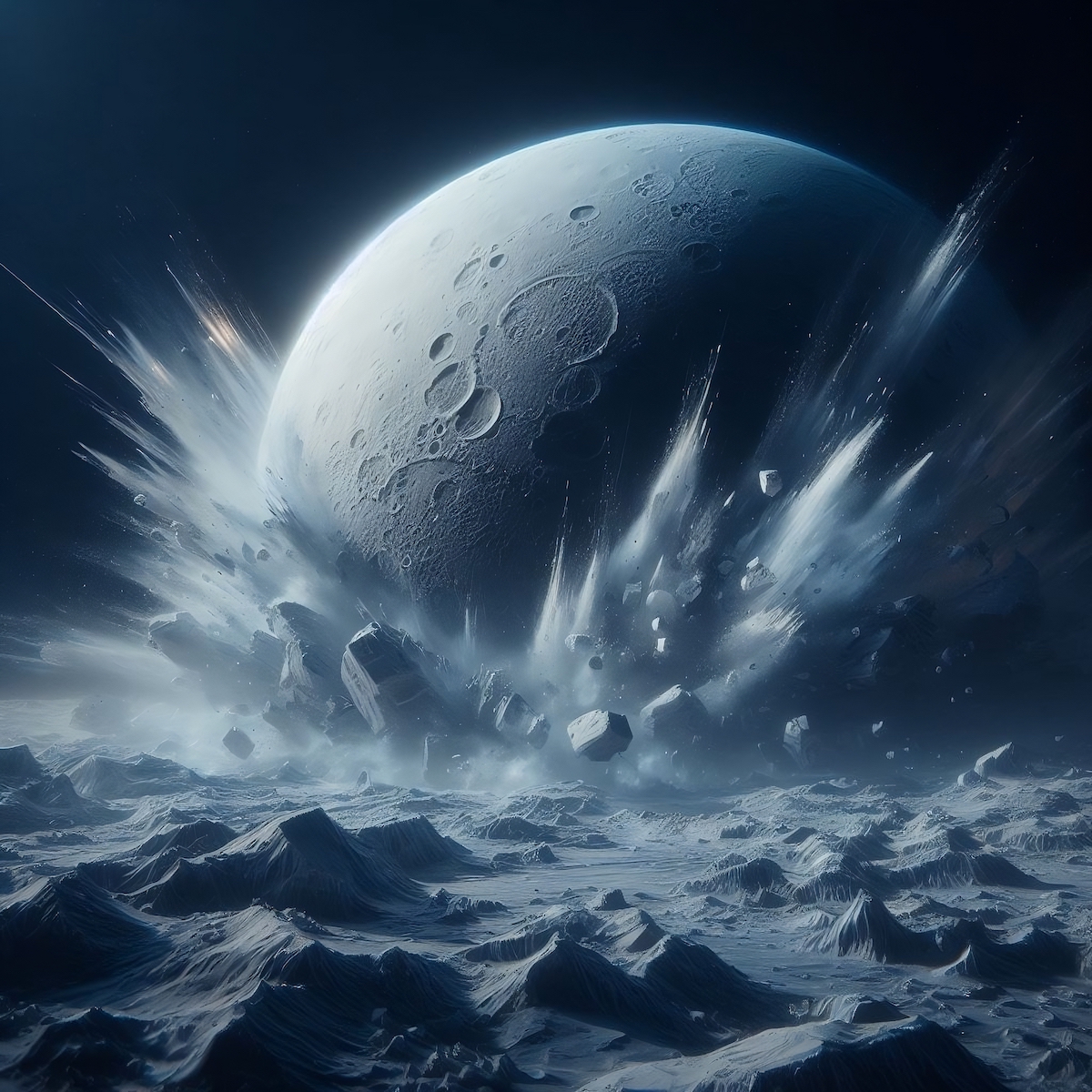 Sometimes planetary physics is like being in a snowball fight. Most people, if handed an already formed snowball, can use their experience and the feel of the ball to guess what kind of snow it is comprised of: wet and puffy, or dry and packable. Using nearly the same principles, planetary scientists have been able to study the structure of Europa, Jupiter’s icy moon. (March 22, 2024 Press Release)
Sometimes planetary physics is like being in a snowball fight. Most people, if handed an already formed snowball, can use their experience and the feel of the ball to guess what kind of snow it is comprised of: wet and puffy, or dry and packable. Using nearly the same principles, planetary scientists have been able to study the structure of Europa, Jupiter’s icy moon. (March 22, 2024 Press Release)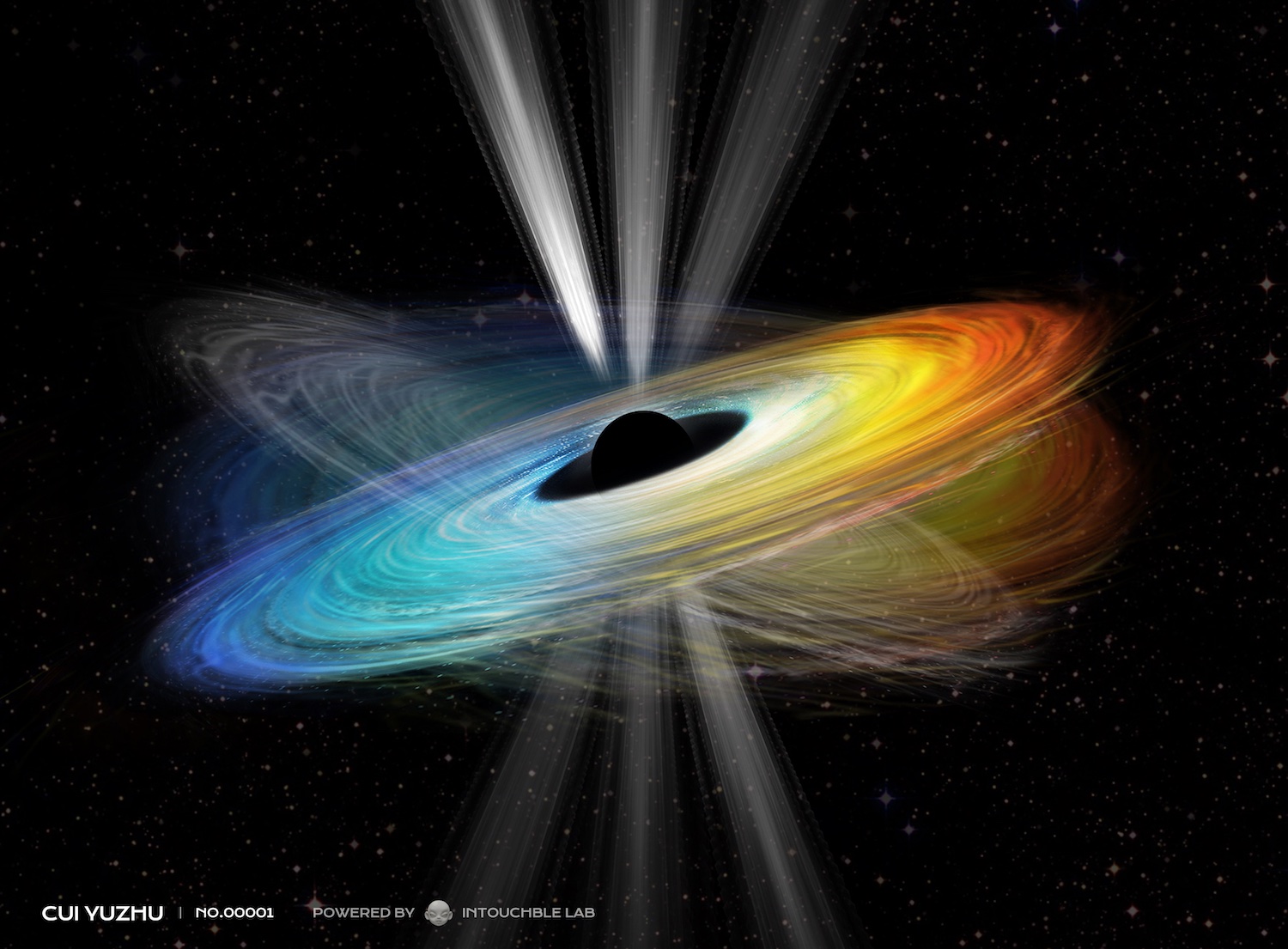 The nearby radio galaxy M87, located 55 million light-years from the Earth and harboring a black hole 6.5 billion times more massive than the Sun, has recently been discovered to exhibit an oscillating jet. This investigation found the jet swinging up and down with an amplitude of about 10 degrees. Through the extensive analysis of data observed from 2000 to 2022 by various international networks of radio telescopes, the research team unveils a recurring 11-year cycle in the precessing motion of the jet base, as predicted by Einstein’s general relativity. This work successfully linked the dynamics of the jet with the central supermassive black hole, offering the evidence for the existence of M87’s black hole spin. The work is published in the current issue of Nature.
The nearby radio galaxy M87, located 55 million light-years from the Earth and harboring a black hole 6.5 billion times more massive than the Sun, has recently been discovered to exhibit an oscillating jet. This investigation found the jet swinging up and down with an amplitude of about 10 degrees. Through the extensive analysis of data observed from 2000 to 2022 by various international networks of radio telescopes, the research team unveils a recurring 11-year cycle in the precessing motion of the jet base, as predicted by Einstein’s general relativity. This work successfully linked the dynamics of the jet with the central supermassive black hole, offering the evidence for the existence of M87’s black hole spin. The work is published in the current issue of Nature.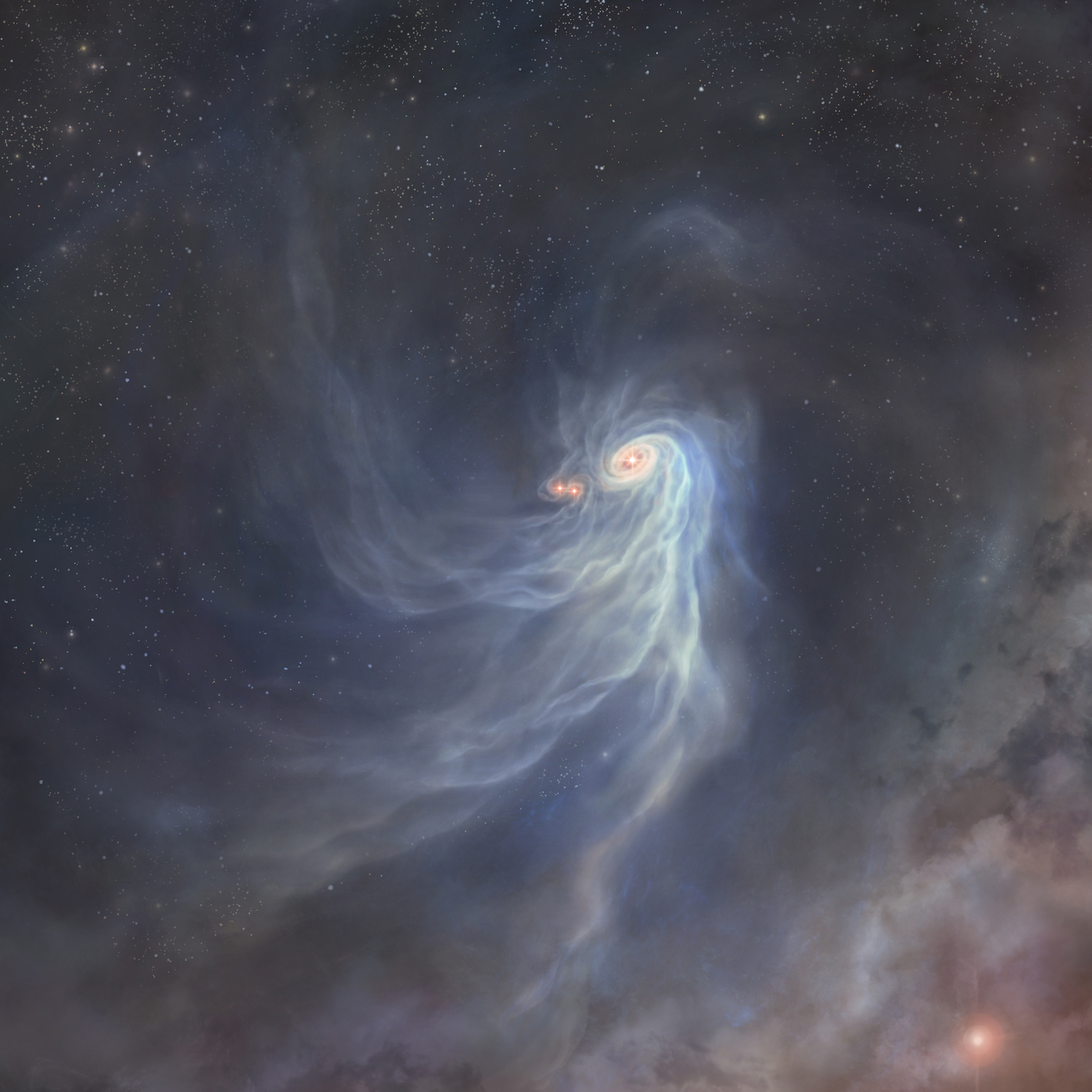 An international research team led by Jeong-Eun Lee, a professor at Seoul National University, used the Atacama Large Millimeter/submillimeter Array (ALMA) to observe the triple protostar system IRAS 04239+2436, to investigate the detailed structure of the gas around the protostars. As a result, they detected radio waves emitted by sulfur monoxide (SO) molecules that indicate the presence of shockwaves and discovered that their distribution forms three large spiral arms. By comparing the velocity of the gas obtained from the observations with numerical simulations led by Tomoaki Matsumoto, a professor at Hosei University, they found that the three spiral arms also play a role of “streamers” feeding materials to the three protostars. Although the origin of the streamers has been unclear, the combination of observations and simulations reveals, for the first time, how the streamers form in the dynamical process of multiple star formation.
An international research team led by Jeong-Eun Lee, a professor at Seoul National University, used the Atacama Large Millimeter/submillimeter Array (ALMA) to observe the triple protostar system IRAS 04239+2436, to investigate the detailed structure of the gas around the protostars. As a result, they detected radio waves emitted by sulfur monoxide (SO) molecules that indicate the presence of shockwaves and discovered that their distribution forms three large spiral arms. By comparing the velocity of the gas obtained from the observations with numerical simulations led by Tomoaki Matsumoto, a professor at Hosei University, they found that the three spiral arms also play a role of “streamers” feeding materials to the three protostars. Although the origin of the streamers has been unclear, the combination of observations and simulations reveals, for the first time, how the streamers form in the dynamical process of multiple star formation. A research team, composed of climatologists and an astronomer, have used an improved computer model to reproduce the cycle of ice ages (glacial periods) 1.6 to 1.2 million years ago. The results show that the glacial cycle was driven primarily by astronomical forces in quite a different way than it works in the modern age. These results will help us to better understand the past, present, and future of ice sheets and the Earth’s climate. (May 15, 2023 press release)
A research team, composed of climatologists and an astronomer, have used an improved computer model to reproduce the cycle of ice ages (glacial periods) 1.6 to 1.2 million years ago. The results show that the glacial cycle was driven primarily by astronomical forces in quite a different way than it works in the modern age. These results will help us to better understand the past, present, and future of ice sheets and the Earth’s climate. (May 15, 2023 press release)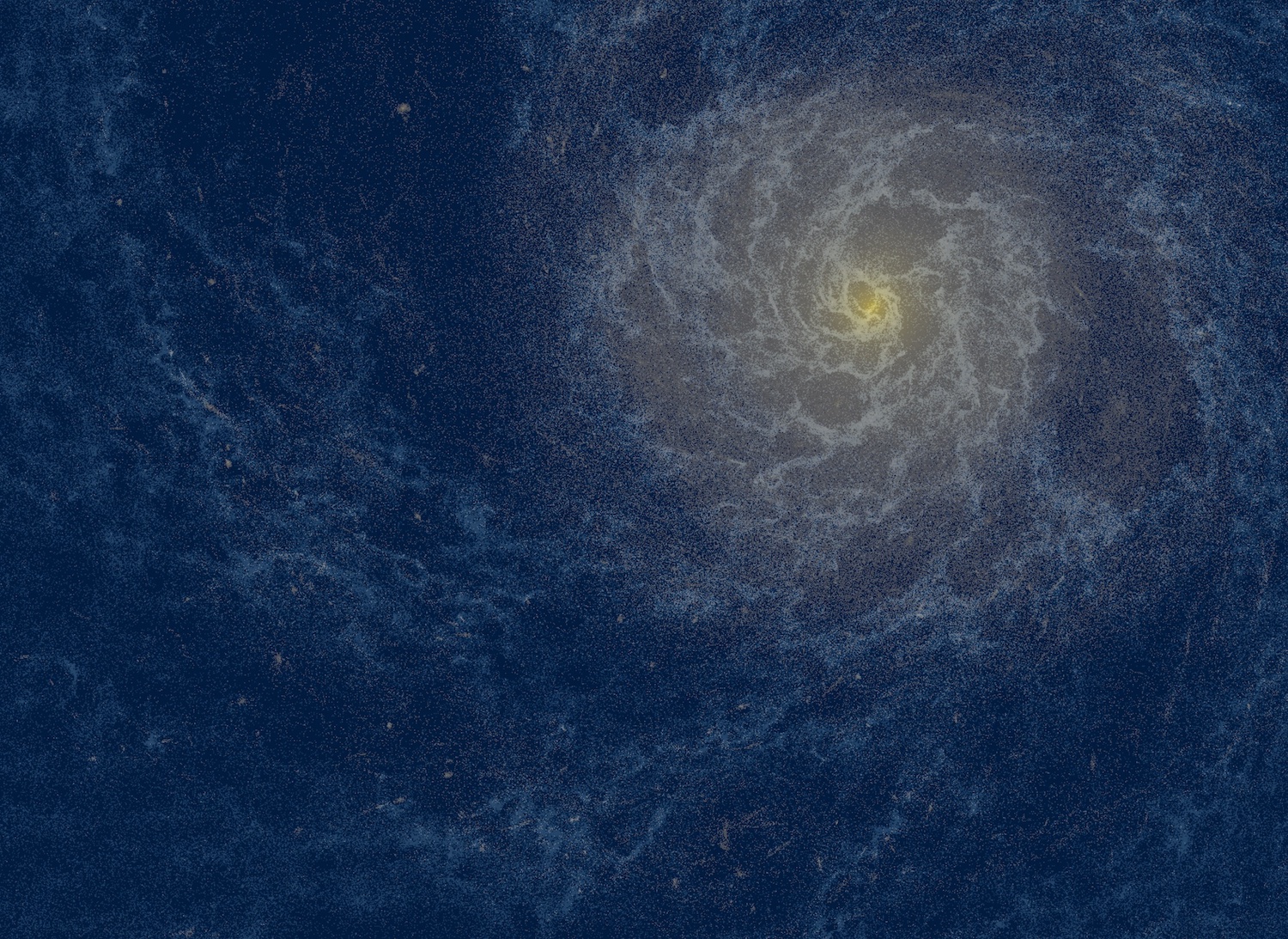 Recently, hundreds of gold-rich stars have been detected by state-of-the-art telescopes worldwide. New simulations of galaxy formation, with the highest resolution in both time and mass, show that these gold-rich stars formed in progenitor galaxies, small galaxies which merged to create the Milky Way. (November 14, 2022 press release)
Recently, hundreds of gold-rich stars have been detected by state-of-the-art telescopes worldwide. New simulations of galaxy formation, with the highest resolution in both time and mass, show that these gold-rich stars formed in progenitor galaxies, small galaxies which merged to create the Milky Way. (November 14, 2022 press release)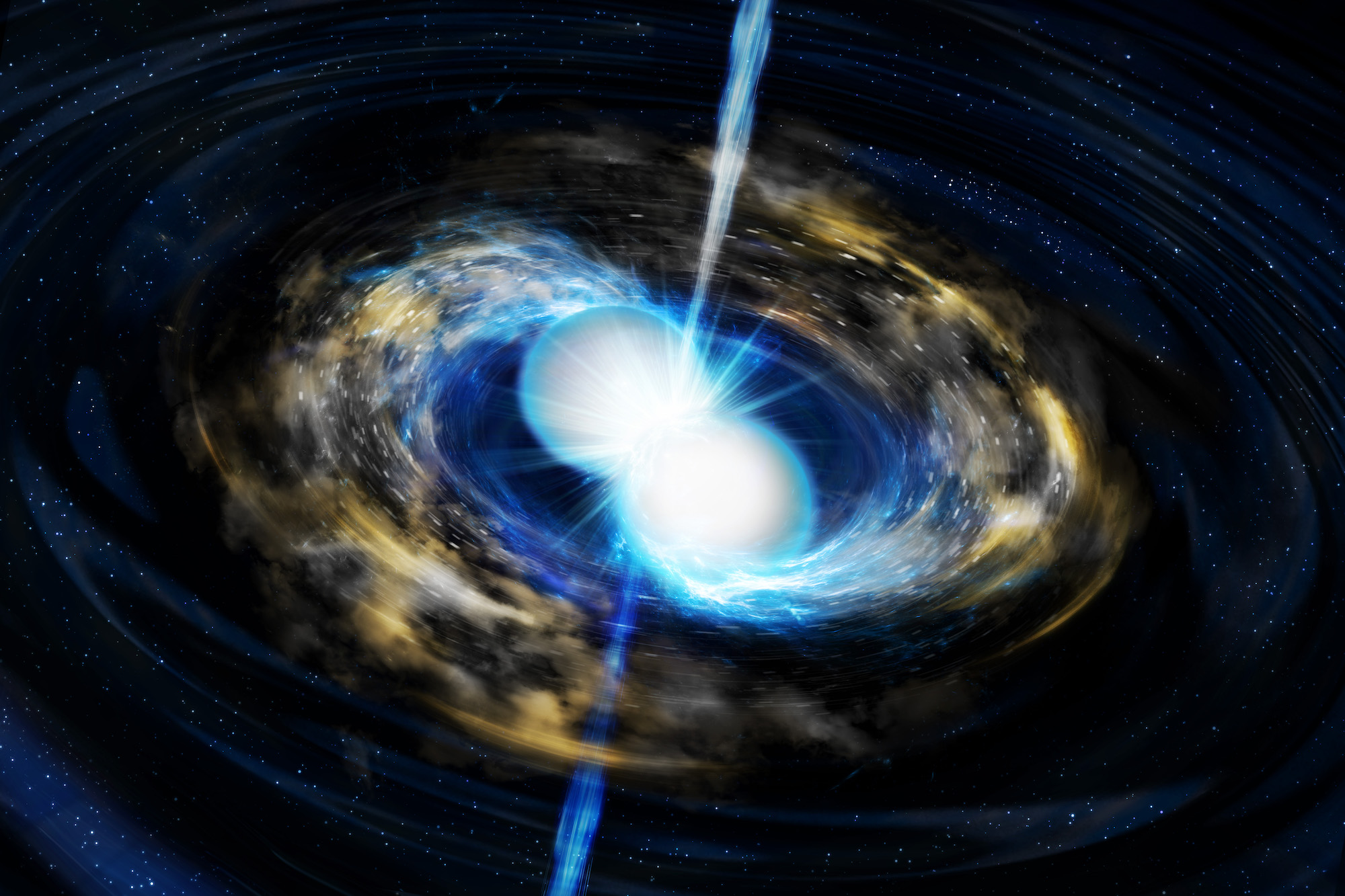 A research group led by Nanae Domoto, a graduate student at the Graduate School of Science at Tohoku University and a research fellow at the Japan Society for the Promotion of Science (JSPS), has systematically studied the spectra from this kilonova—bright emissions caused by the radioactive decay of freshly synthesized nuclei that were ejected during the GW170817 merger. Based on comparisons with detailed simulations of kilonova spectra produced by the supercomputer “ATERUI II” at the National Astronomical Observatory of Japan, the team found that the rare earth elements lanthanum and cerium can reproduce the near-infrared spectral features seen in 2017. (October 27, 2022 press release)
A research group led by Nanae Domoto, a graduate student at the Graduate School of Science at Tohoku University and a research fellow at the Japan Society for the Promotion of Science (JSPS), has systematically studied the spectra from this kilonova—bright emissions caused by the radioactive decay of freshly synthesized nuclei that were ejected during the GW170817 merger. Based on comparisons with detailed simulations of kilonova spectra produced by the supercomputer “ATERUI II” at the National Astronomical Observatory of Japan, the team found that the rare earth elements lanthanum and cerium can reproduce the near-infrared spectral features seen in 2017. (October 27, 2022 press release)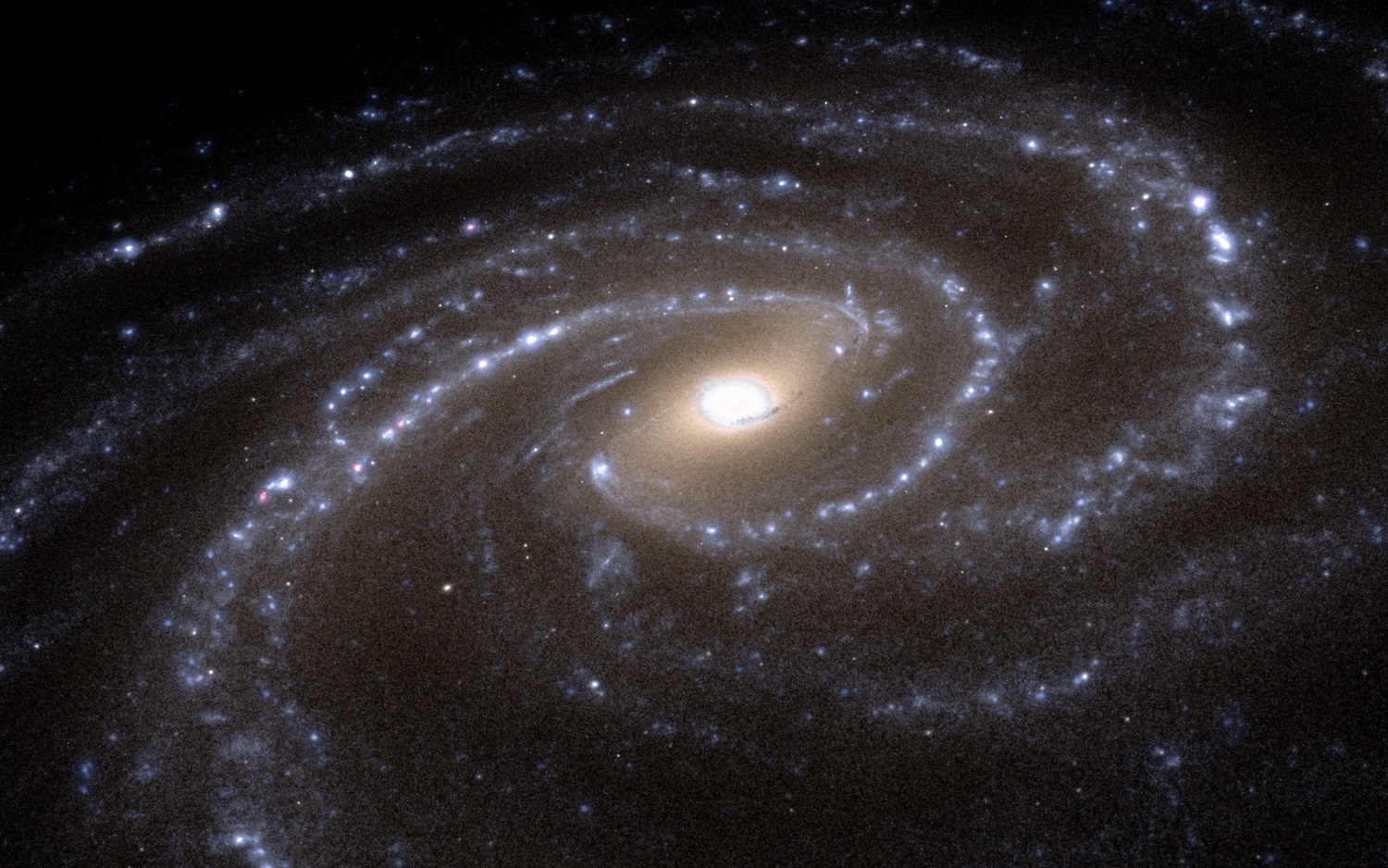 A new simulation conducted on the world’s most powerful supercomputer dedicated to astronomy has produced a testable scenario to explain the appearance of the bar of the Milky Way. Comparing this scenario to data from current and future space telescopes will help clarify the evolution of our home Galaxy. (September 9, 2022 press release)
A new simulation conducted on the world’s most powerful supercomputer dedicated to astronomy has produced a testable scenario to explain the appearance of the bar of the Milky Way. Comparing this scenario to data from current and future space telescopes will help clarify the evolution of our home Galaxy. (September 9, 2022 press release)